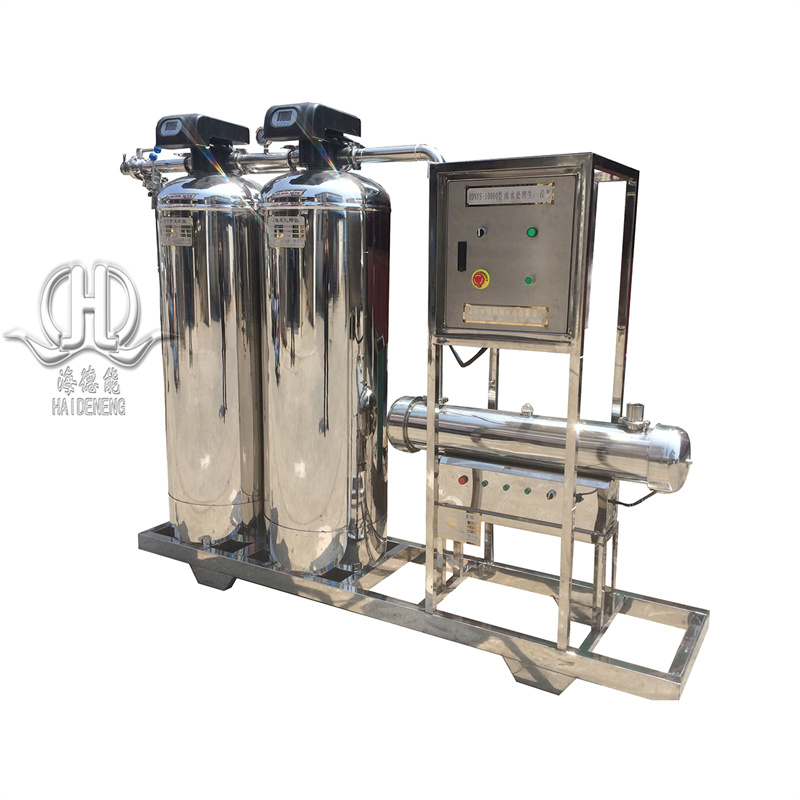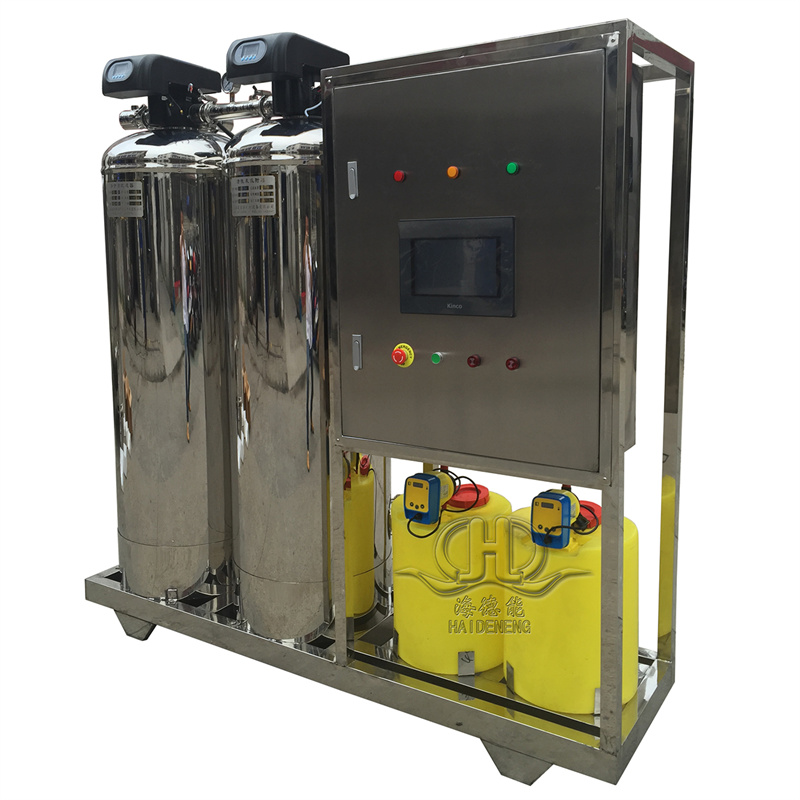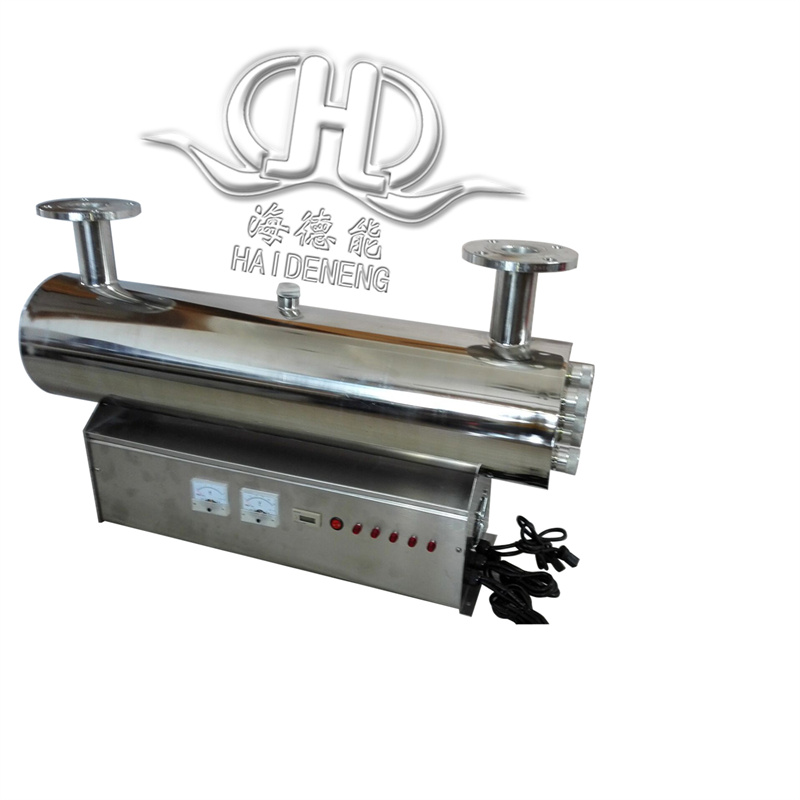Fully Automatic Reverse Osmosis Precision Filtration System for Reducing Salinity in Water Treatment
Product description
Technical analysis of fully automatic reverse osmosis precision filtration system (specialized for salt reduction)
1、 Core System Functions and Salt Reduction Principles
This system is based on reverse osmosis (RO) membrane technology, combined with precision pretreatment and fully automatic control, designed specifically to reduce salt content (total dissolved solids, TDS) in water. It can convert high salt water quality (such as brackish water and industrial wastewater) into low salt pure water. The core principle is that under high pressure (0.8-1.6MPa), water molecules pass through the RO membrane (pore size 0.0001 μ m), while salts (such as Na ⁺, Ca ² ⁺, Cl ⁻, etc.), heavy metals, and organic matter are intercepted, achieving “water salt separation” with a desalination rate of up to 95% -99%.
2、 System composition and process flow
plaintext
Raw water → Pre treatment system (mechanical filtration+activated carbon filtration+precision filtration) → High pressure pump → Fully automatic reverse osmosis device → Pure water tank → Water point
1. Pre treatment system (ensuring RO membrane efficiency)
Mechanical filter:
Filter material: quartz sand (0.5-1.2mm)+anthracite (1-2mm), removes large particle impurities such as sediment and rust (particle size ≥ 20 μ m), and reduces turbidity from 20NTU to ≤ 5NTU.
Backwash: Fully automatic control (pressure difference>0.05MPa or timed for 12 hours) to avoid filter clogging.
Activated carbon filter:
Filter material: Coconut shell activated carbon (specific surface area ≥ 1000m ²/g), which adsorbs residual chlorine (removal rate>99%), organic matter, and odors, preventing the RO membrane from being oxidized and degraded.
Key indicators: residual chlorine in effluent ≤ 0.05mg/L, ensuring membrane lifespan.
Precision filter:
Filter element: 5 μ m PP melt blown filter element, which intercepts fine particles (5-20 μ m) and colloids remaining after pretreatment, making the influent SDI (pollution index) ≤ 5, avoiding scratches or blockages on the RO membrane.
2. Fully automatic reverse osmosis device (salt reduction core)
Membrane components:
Type: Anti pollution polyamide composite membrane (such as Dow BW30-400FR, Heiden ESPAB), resistant to pollution, high desalination rate (single membrane desalination rate ≥ 99.5%).
Arrangement method: two-stage (6:3 or 8:4), improves recovery rate (60% -75%), and reduces concentrated water discharge.
High pressure pump:
Material: 316 stainless steel multi-stage centrifugal pump, providing stable pressure (1.0-1.5MPa, adjusted according to raw water TDS), matched with frequency conversion control, reducing energy consumption by 20%.
Fully automatic control system:
PLC+touch screen control, realizing:
Automatic start stop (linked to pure water tank level, low level start, high level stop);
Low pressure flushing (1 minute after starting up, flushing away impurities on the surface of the film);
Chemical cleaning (automatically triggered when pressure difference>0.15MPa, cleaned with citric acid/sodium hydroxide solution);
Safety protection (automatic shutdown alarm for high voltage overload, low voltage water shortage, and conductivity exceeding the standard).
3. Pure water tank and post-treatment (water storage and water quality stability)
Pure water tank: made of 304 stainless steel material, with a capacity of 1-2 times the system’s water production (such as a 10-20m ³ water tank for a 10m ³/h system), equipped with a built-in liquid level sensor and respirator (to prevent air pollution).
Optional post-processing:
PH adjustment: Add NaOH to adjust the pH of the produced water from 5.5-6.0 to 7.0-8.0 to avoid pipeline corrosion;
UV disinfection: kills trace microorganisms (such as viruses) that may penetrate the RO membrane, ensuring the safety of terminal water quality.
3、 Salt reduction effect and water quality indicators
Water quality indicators: Raw water (brackish water), pre treated RO produced water (after salt reduction)
Total dissolved solids (TDS) 1000-5000mg/L 900-4500mg/L ≤ 50-250mg/L
Conductivity 1500-8000 μ S/cm 1300-7000 μ S/cm ≤ 80-400 μ S/cm
Hardness (CaCO ∝) 300-1000mg/L 300-1000mg/L ≤ 10-50mg/L
Turbidity ≤ 20NTU ≤ 1NTU ≤ 0.1NTU
4、 Technical advantages and applicable scenarios
Core advantages
Efficient salt reduction: The single-stage RO desalination rate is ≥ 95%, and the two-stage RO can reach 99.8%, meeting the low salt requirements of different scenarios;
Fully automatic operation: No need for manual intervention, fault self diagnosis, remote alarm (supporting 4G/5G communication), suitable for unmanned operation;
Anti pollution design: pre-treatment+anti pollution film+automatic cleaning, extending the film life to 3-5 years (traditional system 2-3 years);
Energy saving and Water saving: Variable frequency high-pressure pump+high recovery rate design, energy consumption per ton of water is 1.5-2.5 kWh, and concentrated water can be reused (such as greening and flushing).
Applicable scenarios
Desalination of brackish water: In high salt groundwater areas of Northwest and North China, treat well water with TDS 3000mg/L to ≤ 500mg/L to meet drinking standards;
Industrial water:
Electronic and photovoltaic industries: TDS ≤ 10mg/L (conductivity ≤ 20 μ S/cm) for water production, used for chip cleaning;
Food processing: Remove salt from water to avoid affecting product taste (such as beverage and canned food production);
Wastewater reuse: Treat high salt wastewater (TDS 5000-10000mg/L) from chemical, printing and dyeing industries, and reuse the produced water for circulating cooling or process water;
Island/Ship: Small scale system (5-50m ³/h) for treating seawater (TDS 35000mg/L), equipped with energy recovery devices (such as PX pumps) to reduce energy consumption.
5、 Typical case: High salt wastewater reuse project in an industrial park
Raw water: Chemical wastewater (TDS 8000mg/L, conductivity 12000 μ S/cm);
System configuration: mechanical filtration+activated carbon filtration+5 μ m precision filtration+primary RO (recovery rate of 70%);
Running effect:
TDS ≤ 400mg/L, conductivity ≤ 600 μ S/cm, meeting the requirements for replenishing circulating cooling water;
The system operates fully automatically, producing an average of 300 tons of water per day and saving 100000 tons of fresh water annually;
The membrane cleaning cycle is 12 months, and the operating cost is about 3.5 yuan/ton of water.
6、 Selection suggestions
Small scale system (1-20m ³/h): suitable for rural drinking water and laboratories, covering an area of 5-15 square meters, with a power of 3-15kW;
Medium sized system (20-100m ³/h): suitable for factory and township water supply, equipped with 50-200m ³ water tank, power 20-50kW;
High salt water source (TDS>5000mg/L): It is recommended to use a combination of two-stage RO or RO+nanofiltration (NF) to increase the desalination rate to over 99%.
summarize
This system achieves deep removal of salt through the collaborative design of “precision pretreatment+efficient RO membrane+fully automatic control”, balancing efficiency, stability, and economy. It is the core solution for high salt water purification (such as brackish water and industrial wastewater), widely applicable in the fields of drinking water safety, industrial water conservation, and water resource recycling.












